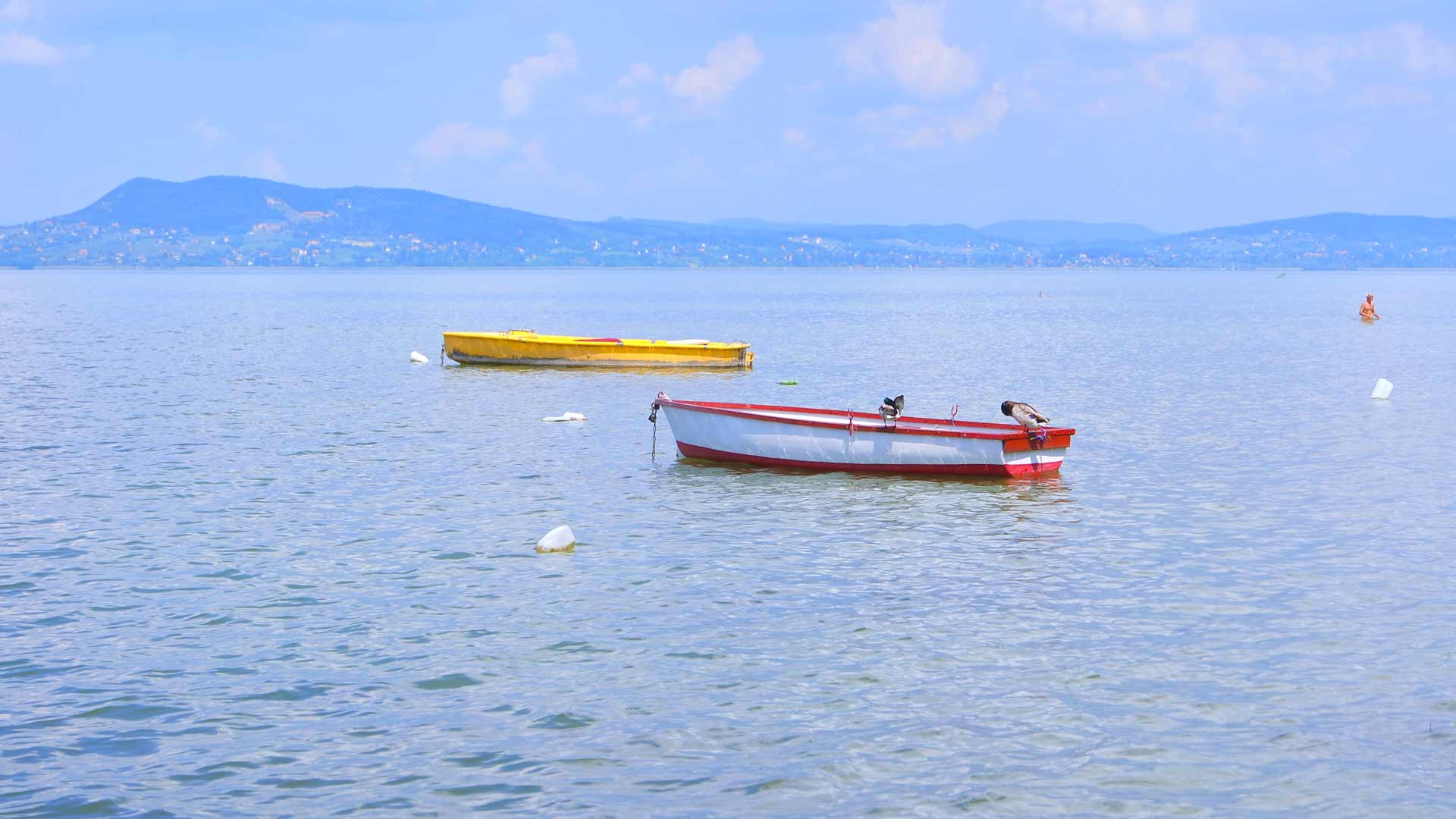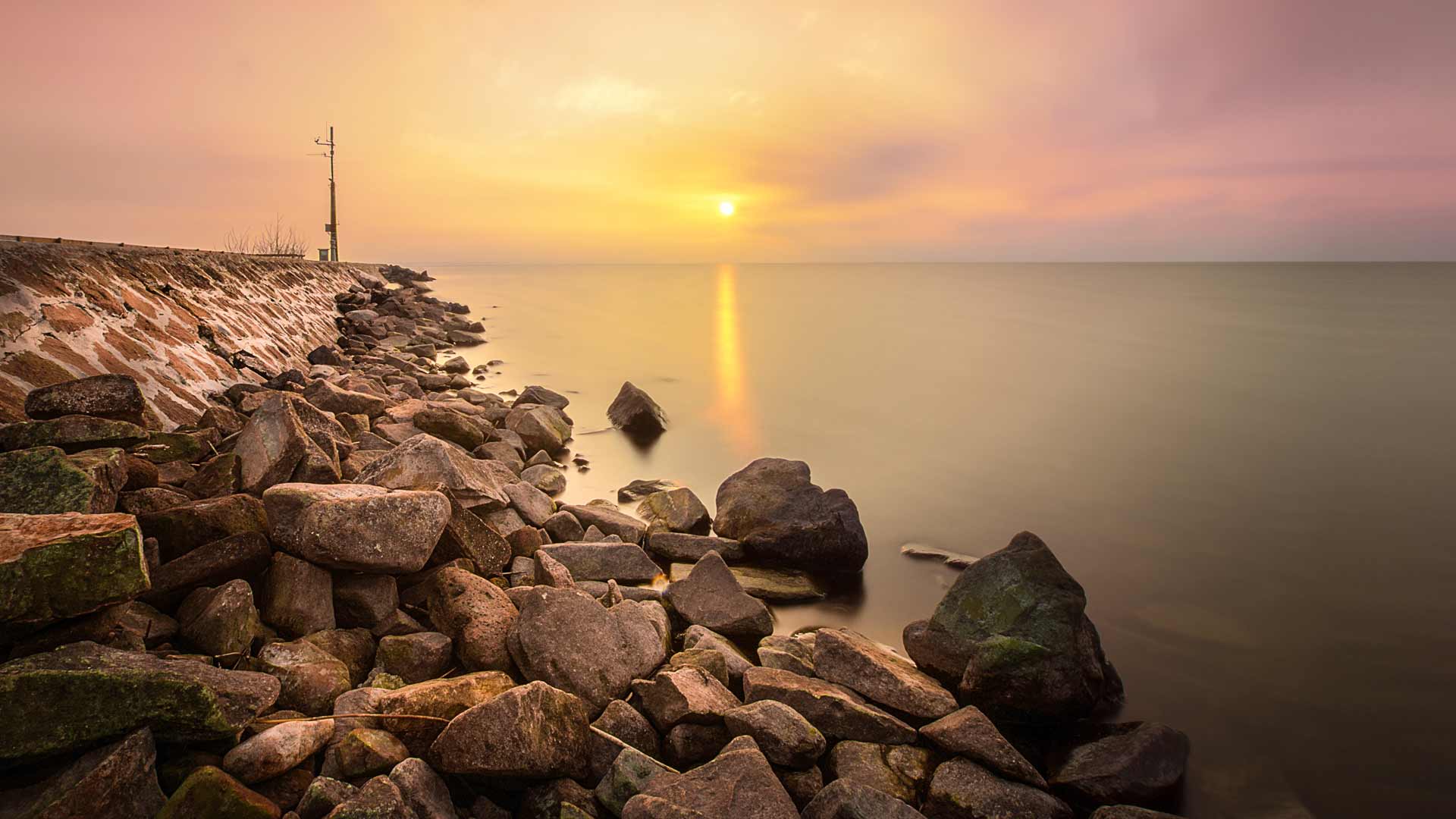The water quality of Lake Balaton will be of concern to all who want to have a dip in it. The Directorate of Water Management monitors it continuously so as to provide bathers with an accurate and up-to-date picture of the purity of the water at each section of the beach.
Where does Lake Balaton’s water come from?
Lake Balaton was formed in the Pannonian (Miocene) age, when most of present-day Hungary was covered by sea and, later, as the water receded, by the so-called Lake Pannon. The lake was slowly filled up by the sediment carried by its tributaries, and this clay and sand deposit became the aquitard layer of the Balaton basin. During the last ice age, pieces of the Earth’s crust sank rapidly, and the basin of the lake started to assume its current shape. This period was characterised by much cooler weather and more precipitation, and it was this rainwater that created Lake Balaton as we know it, some 22,000 years ago.
Initially, the water level of Lake Balaton was much higher than now, and was quite volatile as well due to the cycles of wet and dry periods. For an up-to-date picture on the water quality of Lake Balaton, visit the website of the Directorate of Water Management.
Website of the Directorate of Water Management »
What is the quality of Lake Balaton’s water like?
Despite a slight reduction in water levels last year, the quality of the water is still excellent for bathers. The Balaton Limnological Research Institute, which primarily monitors the quantity of algae in the lake, also provides regular updates on water quality. The proliferation of algae depends on the amount of nutrients in the water, such as phosphorus. If there is a lot of phosphorus in the water, the amount of algae will also increase in open waters. Fortunately, the Siófok Basin has not seen an algae bloom for many years.

The proliferation of algae is linked to water levels
According to a research report published by the Balaton Limnological Research Institute, algae blooms are to be expected when the water level at Siófok falls below 50 cm. A high level of blanket weed makes the lake significantly less attractive to tourists, but it is not an indication of contamination, and the algae produce no toxic substances. It is simply a natural part of the life cycle of the lake.
Some estimates suggest the water level may drop to around the 70 cm mark at Siófok by the end of the 2022 summer season. This means neither the algae floating in the open water nor the blanket weed that lives in the shallow waters of the southern side of the lake are expected to proliferate.
The quality of Lake Balaton’s water is still good
According to data published by the Hungarian Public Health Institute, 95% of open-water swimming destinations in Hungary have good or excellent water quality. Half of these are located near Lake Balaton, and their water quality is checked every month. Despite frequent reports that human activity can have a major detrimental impact on water quality, the most recent measurements suggest this is not a cause for concern at the moment.
Nonetheless, holiday-makers have an important role to play in ensuring the water of Lake Balaton stays clear. If you want to keep enjoying the Hungarian Sea, make sure not to pollute its water in any way. As mentioned previously, the primary concern is the phosphorus content of the water.
Water temperature in Lake Balaton
Tourists care about the temperature of the water just as much as they care about its purity. Lake Balaton is quite shallow, which means that when the air gets warmer, the water quickly follows. Temperatures are typically the highest in July, often reaching 23-25 degrees over the summer. The idokep.hu weather forecast website provides up-to-date data on water temperatures.
Water temperature in Lake Balaton »
Preserving the quality and purity of the water is in everyone’s interest
The Hungarian Tourism Agency offers a number of tips to encourage environmental consciousness and highlight sustainability considerations. A lot of families with children visit Lake Balaton each year, so the quality of the water that they splash around in really matters. It is in everyone’s interest to preserve the quality and purity of the water of Lake Balaton, so let’s all pitch in to make sure we can continue to enjoy Hungary’s favourite holiday destination for many years to come.
How to protect Lake Balaton?
- Use the toilet and wash your hands before bathing, and encourage your children to do the same.
- Make sure to have a shower before heading into the lake. This removes suntan lotion and sweat, which helps preserve the water quality of Lake Balaton.
- Natural purification ensures the quality of the water in Lake Balaton remains high. This process can be severely hindered by rubbish, including plastic bags and bottles, which take many years to decompose. Collect your recyclables separately, or replace them with reusable water bottles and fabric bags. Under no circumstances should you leave them at the beach or throw them in the water.
- Boaters learn, even before taking their final exam, how to protect the lake. Engines can only be used for manoeuvring around the port, and the syllabus also covers the handling of engine oil, wastewater and rubbish.
Aranypart Camping: Lake Balaton right on your doorstep
The lake is close enough that you will not need to pack a whole lot of things for a day at the beach. Just pick up a towel and you can start enjoying the wonderful Lake Balaton straight away. There are a number of restaurants around the lake, so after a day of testing the water quality for yourself, you can enjoy a glass of wine in the golden sunset 😀
Click here for a list of services available at our campsite »
Click here to book your accommodation »
